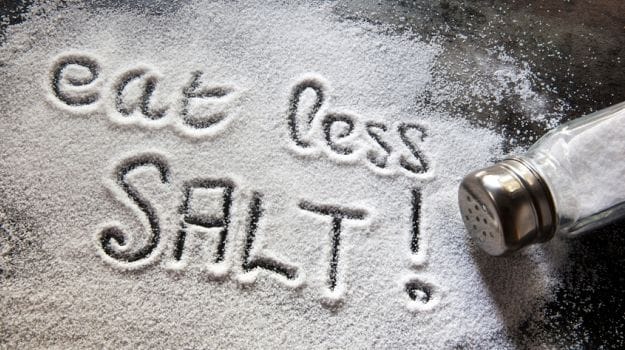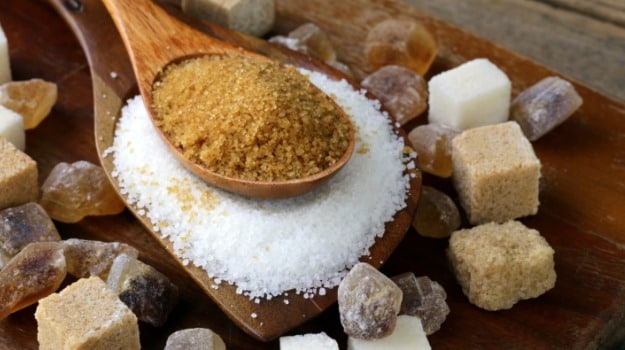You pick up that doughnut because you can't wait to bite into its spongy texture, let the sweet notes hit the right spot, and slowly carry you away to bliss land. But did you know that food manufacturers actually have a standard called Bliss Point. Seriously, I am not kidding. For every food there is an optimal concentration at which sensory pleasure is at its maximum. The bliss point pretty much determines what we eat and drink an d how much. Food researchers say that people love sugar, especially kids. So until the bliss point is reached, the more the sugar, the happier we are.There is no doubt that The Big Three, sugar, fat and salt make food compelling. They make it tastier. They leave us wanting more. And there is a science behind this. Countless foods in grocery stores either have these loaded as a core ingredient, like in meats or bread. At other times they are loaded as a layered ingredient. Cheese coated chips for example.When we put food rich in sugar, salt and fat in our mouths, our taste buds in the tongue send a signal to the lower part of our brain. The brain in turn stimulates neurons. The neurons in our brain are part of the "opioid" circuitry or endorphins. When we eat highly palatable foods, in other words, foods filled with sugar, salt and fat, they enable the body to perceive a highly rewarding experience.

Rewarding foods tend to be reinforcing. We want to go back for more. We can't stop at the first chip or chocolate bite. It has been proved scientifically that the combination of sugar and fat is a strong reinforcer.
Apart from sensory pleasure, our eating patterns are also influenced by our history of personal experiences. What we ate during our childhood could strongly influence us. If the circumstances around eating a rewarding food are pleasant, it becomes an emotional experience which gets stored in our memory. When we recall that food, it will stimulate desire.But desire can also carefully calibrated. Sugar, salt and fat are not enough to make you eat. It has to be the right amount of each. It has to be the coming together of these tastes that can do the magic. A cream filled cookie is appealing because of the texture and the unique taste of crunchy biscuit combined with the sweetness of the cream filling. (More: How to give up sugar in 11 easy steps)

The food industry employs people whose main job it is to get the desirable mix of attributes. A small group of scientists who create most of the food that is consumed in the USA are called flavorists. I happen to meet one now in India who is advising big fast food chains about their line of products in India. It left me quite horrified to learn the procedures that are followed before giving the green signal to a new product. Do you think manufacturers of sugar products actually tell you how much sugar they add to their products? Or do they leave you with the amount of sugar that occurs naturally in their products. Well, that's a story for another time. (More: A guide to sweet stuff in all its forms)Fast Food Nation, a bestseller for many years written about the fast food industry in the US says, and I quote, "A flavorist is a person with a trained nose and a poetic sensibility. In order to give processed food the proper taste, the flavorist must always consider the food's "mouthfeel". It's the unique combination of textures and chemical interactions that affect how flavour is perceived. It gauges the most important properties of food - the bounce, creep, breaking point, density, crunchiness, chewiness, gumminess, rubberiness, lumpiness, springiness, slipperiness, smoothness, softness, wetness, juiciness, spreadbility, spring-back and tackiness."I can almost visually see my packet of chips being analyzed to death by a flavorist in a white lab coat, sitting in a food factory with computer screens, digital read outs and graphs and charts on the wall. I don't know about you, but I have suddenly lost my appetite.

Rewarding foods tend to be reinforcing. We want to go back for more. We can't stop at the first chip or chocolate bite. It has been proved scientifically that the combination of sugar and fat is a strong reinforcer.
Apart from sensory pleasure, our eating patterns are also influenced by our history of personal experiences. What we ate during our childhood could strongly influence us. If the circumstances around eating a rewarding food are pleasant, it becomes an emotional experience which gets stored in our memory. When we recall that food, it will stimulate desire.But desire can also carefully calibrated. Sugar, salt and fat are not enough to make you eat. It has to be the right amount of each. It has to be the coming together of these tastes that can do the magic. A cream filled cookie is appealing because of the texture and the unique taste of crunchy biscuit combined with the sweetness of the cream filling. (More: How to give up sugar in 11 easy steps)

The food industry employs people whose main job it is to get the desirable mix of attributes. A small group of scientists who create most of the food that is consumed in the USA are called flavorists. I happen to meet one now in India who is advising big fast food chains about their line of products in India. It left me quite horrified to learn the procedures that are followed before giving the green signal to a new product. Do you think manufacturers of sugar products actually tell you how much sugar they add to their products? Or do they leave you with the amount of sugar that occurs naturally in their products. Well, that's a story for another time. (More: A guide to sweet stuff in all its forms)Fast Food Nation, a bestseller for many years written about the fast food industry in the US says, and I quote, "A flavorist is a person with a trained nose and a poetic sensibility. In order to give processed food the proper taste, the flavorist must always consider the food's "mouthfeel". It's the unique combination of textures and chemical interactions that affect how flavour is perceived. It gauges the most important properties of food - the bounce, creep, breaking point, density, crunchiness, chewiness, gumminess, rubberiness, lumpiness, springiness, slipperiness, smoothness, softness, wetness, juiciness, spreadbility, spring-back and tackiness."I can almost visually see my packet of chips being analyzed to death by a flavorist in a white lab coat, sitting in a food factory with computer screens, digital read outs and graphs and charts on the wall. I don't know about you, but I have suddenly lost my appetite.
Advertisement













